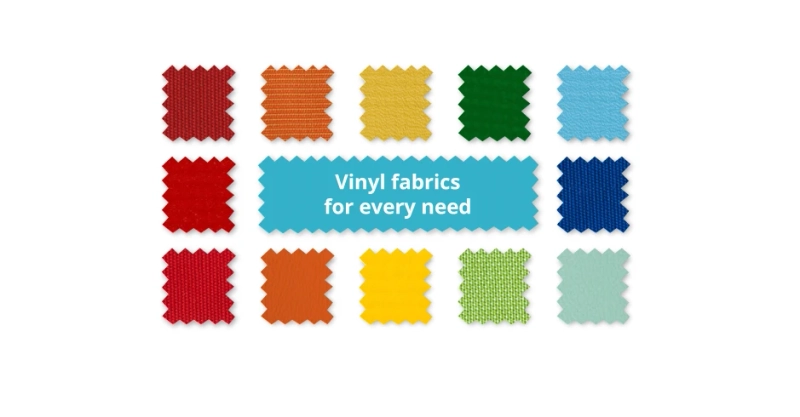When it comes to outdoor comfort and design, few things make a bigger impact than a well-chosen awning. Whether it’s shading a patio, storefront, camper, or backyard deck, awnings create a welcoming outdoor space that offers both function and flair. At the heart of every great awning is the material it's made from—awning fabric. This isn’t just any textile; it’s a purpose-built material that needs to hold up under sun, rain, wind, and even snow while still looking great.
So, what exactly is awning fabric, and how do you choose the right one? Let’s dive into everything you need to know about this essential outdoor fabric.
What Is Awning Fabric?
Awning fabric is a specialized outdoor textile designed to be weather-resistant, durable, and aesthetically pleasing. It’s used to cover awnings, canopies, pergolas, shade sails, and other structures that provide shelter from the elements. Unlike regular indoor fabric, awning fabric is made to resist UV damage, repel water, prevent mold and mildew, and endure changing weather conditions over time.
Typically made from materials like acrylic, polyester, or vinyl, this fabric is available in a wide range of colors, patterns, and textures, allowing it to serve both practical and decorative purposes.
Why Awning Fabric Matters
Choosing the right awning fabric isn’t just about finding something that looks good—although that's certainly part of it. The fabric you pick determines how long your awning will last, how much protection it provides, and how well it holds up to years of exposure to the elements. Good awning fabric can mean the difference between an outdoor space that’s inviting and one that’s hot, damp, or quickly deteriorating.
Here’s why quality awning fabric matters:
1. UV Protection
A major reason people install awnings is to get relief from the sun. High-quality awning fabric blocks harmful UV rays, protecting not only your skin but also the furniture, flooring, and fixtures beneath the awning from sun damage and fading.
2. Water Resistance
Whether it’s a passing shower or a full-blown storm, outdoor awnings are going to get wet. Awning fabric is designed to resist water penetration. Some are even waterproof, ideal for commercial spaces or regions with frequent rain.
3. Durability
Outdoor fabrics deal with a lot—strong winds, fluctuating temperatures, and even bird droppings or tree sap. Premium awning fabric is woven and coated to stand up to daily wear and tear without fading, tearing, or sagging.
4. Mold and Mildew Resistance
Damp environments are breeding grounds for mold and mildew. Awning fabrics are treated with special coatings to prevent microbial growth, which is especially important for awnings that don’t get much direct sunlight.
Believe it or not, using awnings can help reduce cooling costs by limiting the amount of direct sunlight that enters your home or building. With the right awning fabric, you’re not just creating shade—you’re increasing energy efficiency.
Types of Awning Fabric
There are several types of awning fabric, each with its pros and cons. Here’s a quick overview of the most common materials:
✔ Acrylic Fabric
Acrylic awning fabric is a top choice for residential and commercial use. It’s known for its vibrant colors, long lifespan, and breathability. Unlike vinyl, acrylic allows some airflow, which helps reduce heat buildup underneath.
- Pros: Fade-resistant, breathable, stylish
- Cons: Typically water-resistant, but not waterproof
✔ Vinyl-Coated Fabric
Vinyl awning fabrics are often made by coating polyester or canvas with a layer of vinyl, making them more resistant to moisture and mildew.
- Pros: Waterproof, durable, easy to clean
- Cons: Less breathable, can get hot underneath
✔ Polyester Fabric
Polyester awning fabric is lightweight, affordable, and can be treated for added UV or water resistance. It’s often used in temporary or seasonal setups.
- Pros: Budget-friendly, flexible
- Cons: May not last as long as acrylic or vinyl options
✔ Canvas
Traditional canvas can be treated for outdoor use, but it requires more maintenance. Though natural and breathable, it’s not as popular today due to its tendency to fade and retain moisture.
- Pros: Classic look, eco-friendly options
- Cons: High maintenance, less resistant to mold
Where You’ll See Awning Fabric in Use
The versatility of awning fabric makes it a staple across many outdoor environments:
- Patios and Decks: For homeowners who want to extend their living space outdoors without getting scorched by the sun.
- Storefronts and Cafés: Business owners use awnings for branding and to create comfortable outdoor seating or shopping areas.
- RVs and Campers: Portable awnings made from tough awning fabric make camping much more comfortable.
- Pergolas and Gazebos: These fixed outdoor structures often use awning fabric as a roofing material for added shade.
Choosing the Right Awning Fabric
When selecting awning fabric, keep these factors in mind:
- Climate: Live in a rainy region? Go waterproof. Lots of sun? Choose high UV protection.
- Usage: Permanent or seasonal? Fixed or retractable awnings?
- Style: Awning fabric comes in stripes, solids, and custom prints—pick something that complements your home or brand.
- Maintenance: Some fabrics are virtually maintenance-free, while others need occasional cleaning or retreatment.
Also, look for warranties. Quality awning fabric often comes with warranties ranging from 5 to 10 years, which tells you a lot about how well it’s built to last.
Final Thoughts
Awning fabric might not be something you think about often, but it plays a crucial role in how we enjoy outdoor spaces. The right fabric creates comfort, enhances curb appeal, protects against the elements, and can even help save energy. Whether you’re outfitting your home patio, your business front, or your camper, investing in high-quality awning fabric is a choice you’ll appreciate for years to come.
With so many textures, patterns, and features to choose from, you can find the perfect fabric to match both your needs and your style. So next time you’re soaking up the shade under a beautifully designed awning, remember—it’s the fabric doing the heavy lifting.


